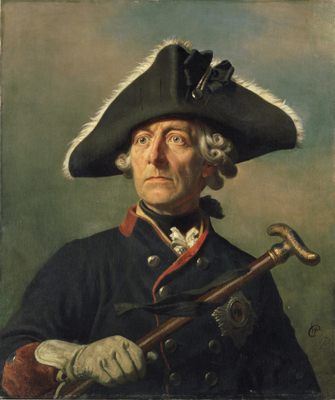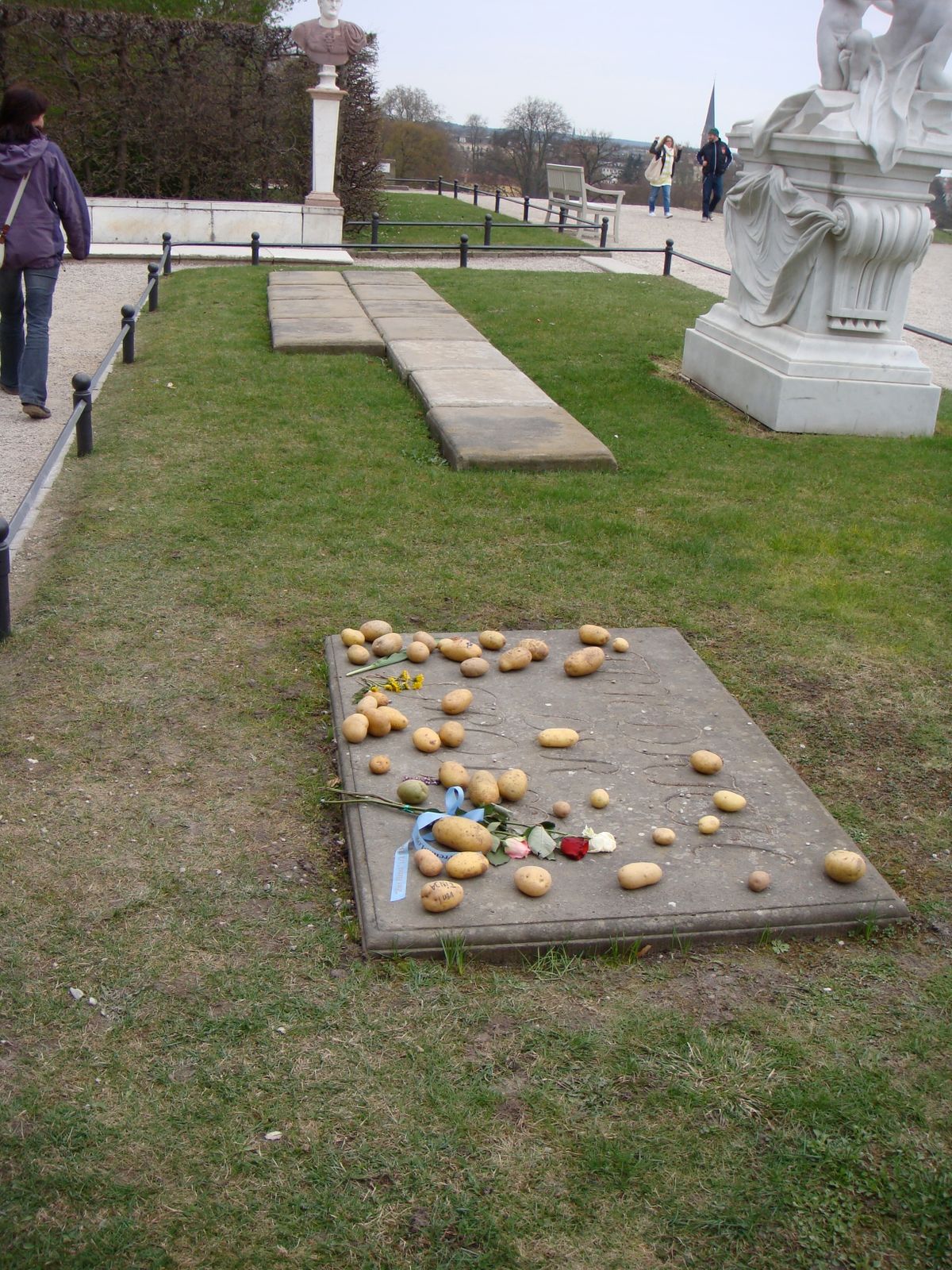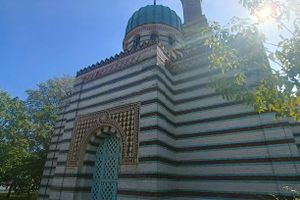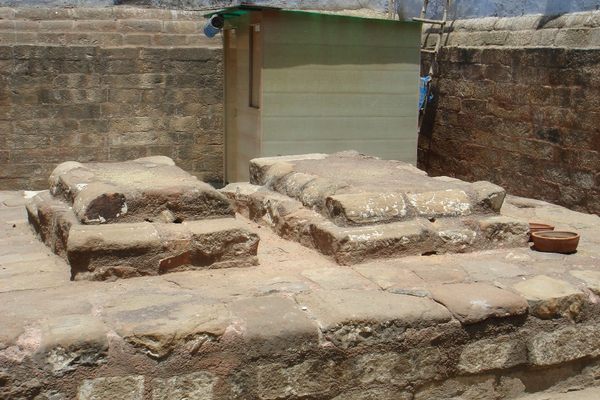About
Walking the grounds of Sanssouci Palace in Potsdam, you might stumble across a peculiar gravestone that is covered with potatoes. Perhaps even more confusingly, the stone bears the name of King Fredrick the Great of Prussia. While this may seem odd, it is actually a sign of respect and gratitude to Der Kartoffelkönig ("the potato king").
Though potatoes are a large part of diets around the world, this was not always the case. The potato plant, which is native to South America, didn't even find its way to Europe until well into the 16th century. Even then, it was often used as an ornamental plant. Potatoes are part of the family Solanaceae, which includes a number of plants that are poisonous to humans—like deadly nightshade. Because of the resemblance to such toxic plants, many people were wary of eating potatoes.
By the 18th century, potatoes had become more popular. They were seen as a cheap, filling source of food across Europe—with one notable exception. The people of Prussia (which would eventually become part of modern Germany) remained wary of the potato.
There's a common saying in Germany: "Was der Bauer nicht kennt, frisst er nicht" ("What the peasant doesn’t know, he will not eat")—it's commonly used to refer to people who are skeptical of new things. And in the 18th century, that sentiment was so strong that it seemed impossible to get many Prussians to even taste these new tubers.
But during the Austrian Wars of Succession, Prussia was hit by a famine. And King Frederick the Great, a proud potato proponent, knew that the new crop could help his people survive. He passed an order to increase potato crops, but many Prussians still refused the new crop.
When King Fredrick could not force his people to eat potatoes, he had to get creative. He served them at meals in the royal household and distributed free seed potatoes. There is a common story (though its truth is debated), that the king developed a cunning plan to generate interest. He kept a heavy guard presence around his potato fields in Berlin during the day, but at night, the crops were left unprotected. He wanted people to think that the potatoes were quite precious, which might them to sneak some of the valuable vegetables when guards weren't looking.
According to the story, the plan worked brilliantly and the potato was finally embraced. Today, it's a huge part of German cuisine. Most days, some of the visitors to Sanssouci Palace will leave a raw potato on King Frederick's grave as a way to thank him for his role in helping potatoes take root in Prussia.
Related Tags
Know Before You Go
The grave is to your right if you go up to the palace via the stairs, on a little grass patch just before the hedge.
Published
December 16, 2022
Sources
- https://www.welt.de/geschichte/article160307743/Der-preussische-Kartoffelkoenig.html
- https://www.berlinexperiences.com/did-frederick-the-great-introduce-the-potato-to-germany-mythbusting-berlin/
- https://www.smithsonianmag.com/history/how-the-potato-changed-the-world-108470605/
- https://www.alimentarium.org/en/fact-sheet/potato
- https://burialsandbeyond.com/2020/12/11/the-grave-of-the-potato-king-friedrich-der-grose/



































